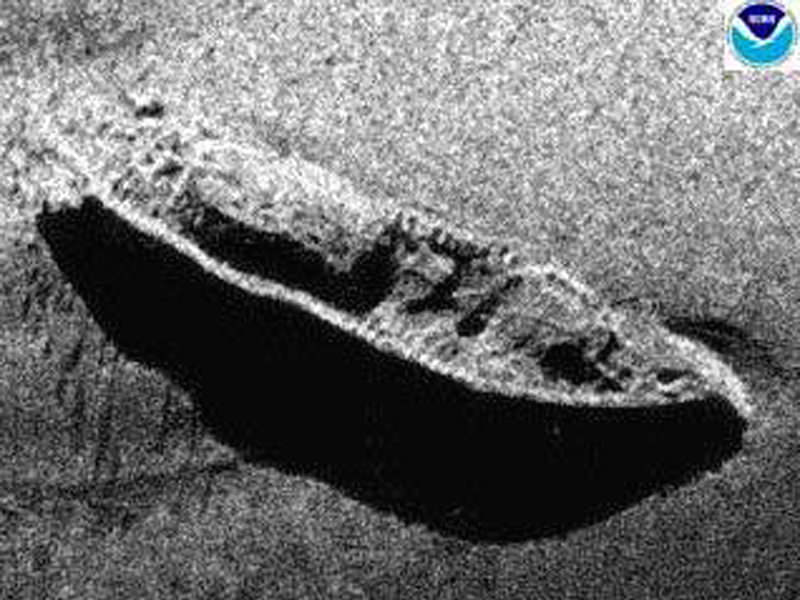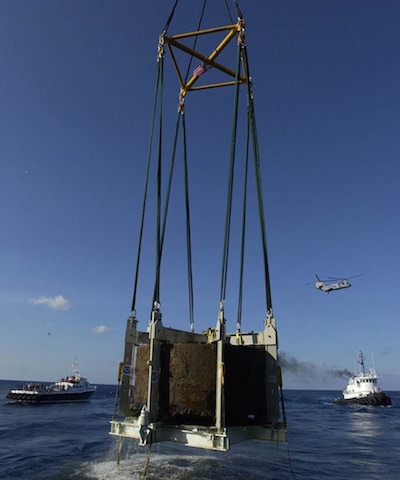How a Civil War Shipwreck Became America's First Sanctuary, 40 Years Ago

On a stormy night in December 1862, one of the most famous ships in history vanished into the depths of the Atlantic Ocean.
The ironclad USS Monitor, Civil War icon and salvation of the Union Navy, had been in service less than a year when it sank in a vicious gale off Cape Hatteras, N.C., in the early morning hours of Dec. 31, 1862. The Monitor had fought the Confederate ironclad CSS Virginia on March 9 at Hampton Roads, Va., in a battle that marked the dawn of a new age of iron warships — but iron was no match for the wrath of the ocean. The flicker of the Monitor's red signal lantern was the last thing seen by the steamer USS Rhode Island, which had been towing it south when heavy seas swamped the low-riding ironclad and carried it to the bottom.
A Missing Icon Resurfaces

Lost to the clutches of the sea for more than a century, the Monitor was finally discovered in 1973 after decades of fruitless searching. It was found in 230 feet of water, 16 miles off the North Carolina coast.
To the dismay of those who were concerned about the Monitor falling victim to looters, the wreck seemed to be outside the scope of any recognized federal authority. A U.S. Navy official had written a letter in 1953 abandoning it from the inventory of Navy vessels, hoping to facilitate its discovery and possible salvage by private entities. No one seemed to know how to protect this newly discovered national treasure.
An Ironclad Finds a Champion
No one, that is, except Congressman Walter B. Jones Sr., representative for North Carolina's Outer Banks. Just a year before the Monitor's discovery, Jones had championed the passage of the Marine Protection, Research, and Sanctuaries Act of 1972, which granted the secretary of commerce the authority to designate "marine sanctuaries" to protect areas of special value in U.S. waters.
When the Monitor was found off the coast of his home state, Jones saw an opportunity to put the so-called Sanctuaries Act to use. Some favored creating an entirely new law to protect the Civil War ironclad, but he had another solution: make the Monitor a national marine sanctuary.
"It was a pretty amazing coincidence that the act passed just before the Monitor was discovered," says John Broadwater, former manager of the Monitor sanctuary and author of "USS Monitor: A Historic Ship Completes Its Final Voyage."
Testing the Sanctuary Waters

Still, a few obstacles stood in the way. First, no one had ever created a marine sanctuary before. And second, the act was never intended to protect maritime heritage resources like shipwrecks — even one as significant as the first ironclad warship. The original language of the Sanctuaries Act made no mention whatsoever of historical, cultural or archaeological value.
How, then, did the USS Monitor become America's first national marine sanctuary? "It was really an "emergency rescue' kind of situation," Broadwater says.
Thanks in large part to the work of Congressman Jones and others like Harold "Doc" Edgerton (a respected MIT scientist who was part of the discovery team) a growing number of scientists, politicians and ocean managers came to view sanctuary designation as the best — and perhaps the only — means of protecting the Monitor. Without swift action, they agreed, the vessel could be irreparably damaged or even destroyed.
USS Monitor Makes History - Again
In September 1974, the North Carolina Division of Archives and History formally nominated the Monitor for sanctuary designation. NOAA worked quickly in cooperation with the Smithsonian Institution and the state of North Carolina to create plans for management, protection and research at the site. They didn't have long to wait.
Just four months later, on Jan. 30, 1975, President Gerald Ford approved the designation of Monitor National Marine Sanctuary, making it the very first site in what is today a system of 13 sanctuaries and one marine national monument throughout U.S. waters. In many ways, the designation set the tone for the future of the National Marine Sanctuary System — both in its recognition of the importance of our maritime heritage, and in its emergence as a means of protecting the nation's underwater treasures when all other options fail.

